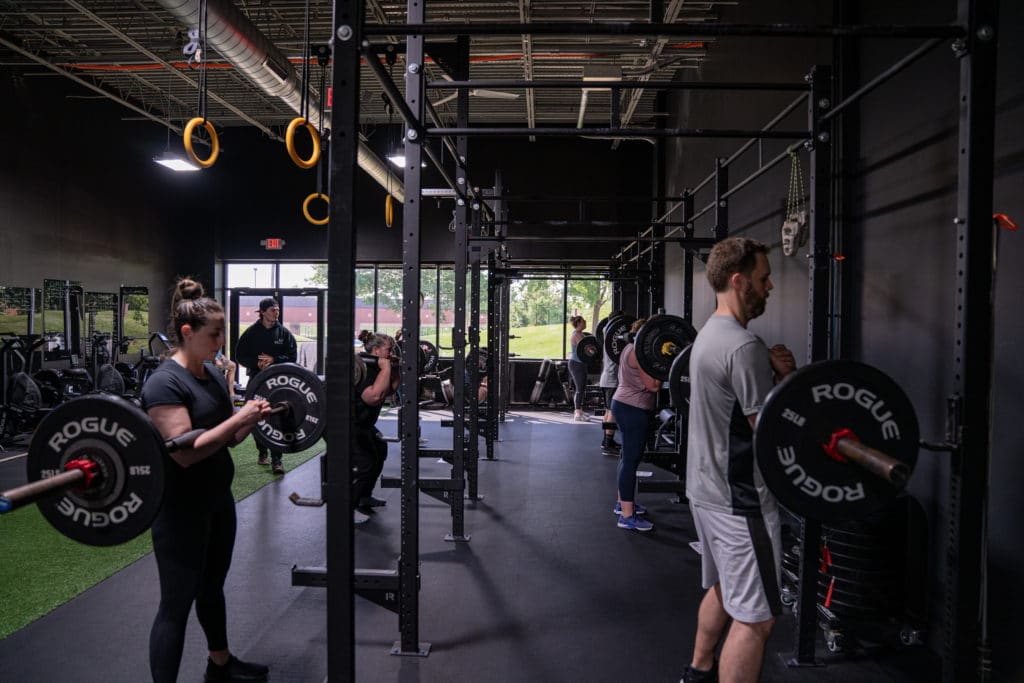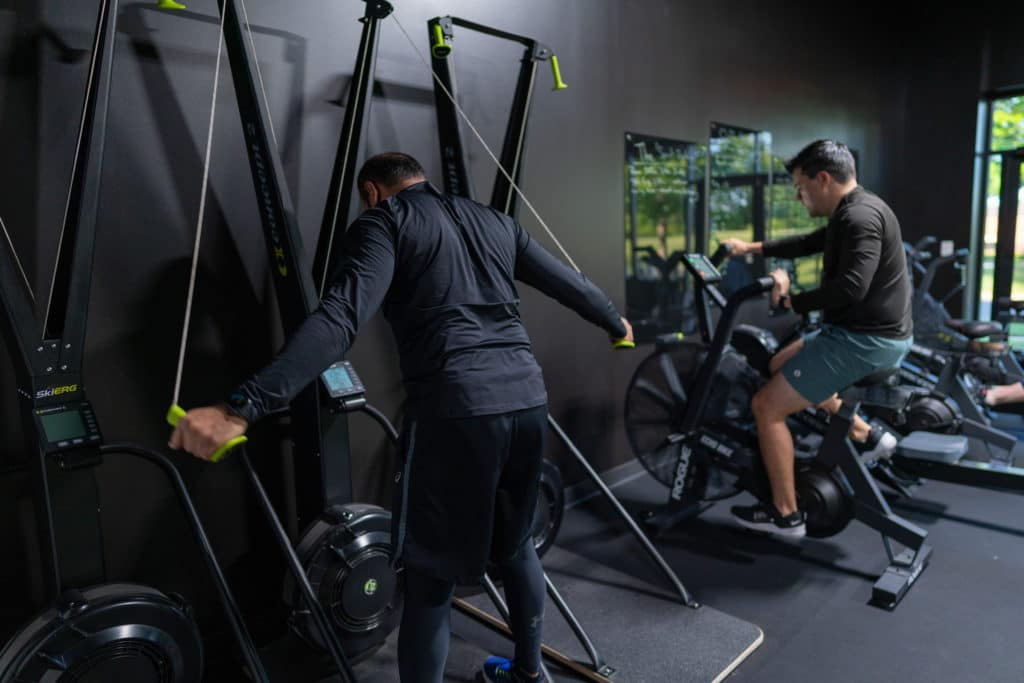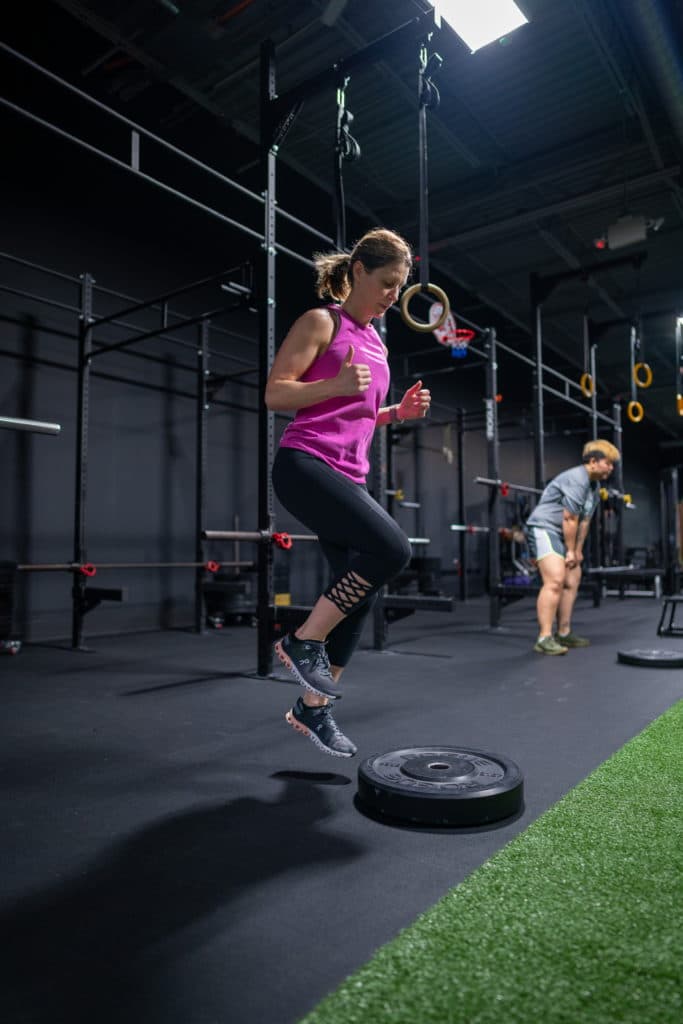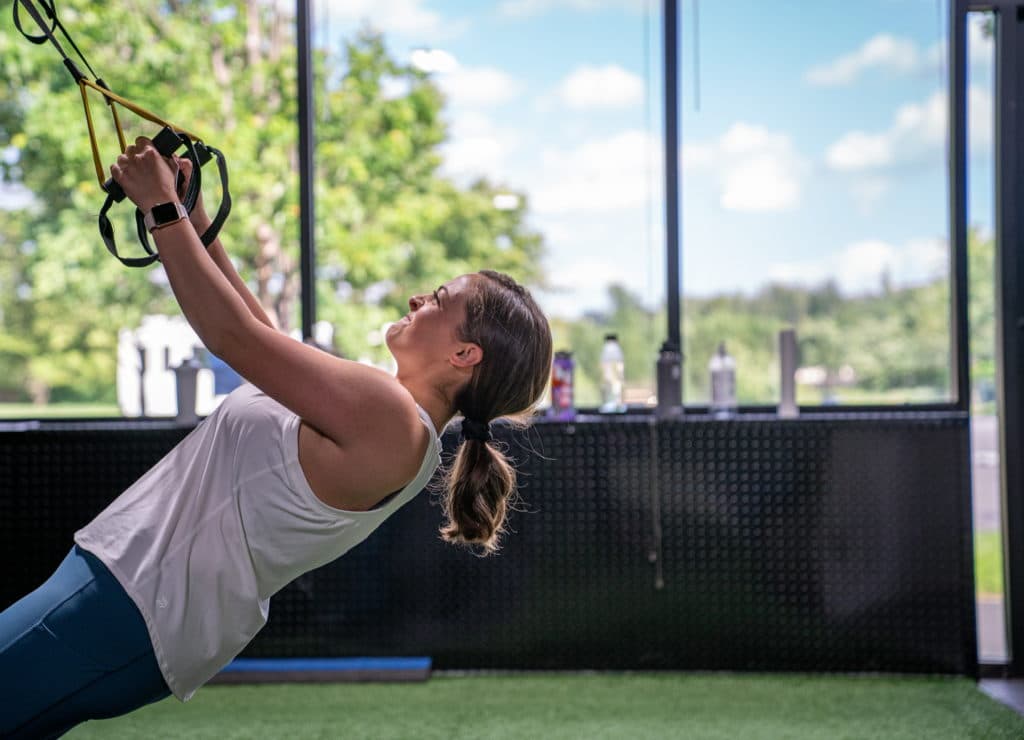Last month we increased training volume. This month, we intensify…
Monday and Thursday: Strength A and Strength B
Ladies and gentlemen, we’re going to hoist some iron.
Our main goal for this training block is to improve your maximal strength after spending the first block of the year doing about 27 billion reps. We started off this block with sets of 5, bumped up to sets of 6, and in the final phase of this block we’ll do sets of 3 and sets of 5 on our main strength lifts.

Getting stronger requires lifting heavier things without overloading your body. Sets of three between an @7 and @9 RPE does that for you. Lifting a tad heavier also builds your lifting skills. Strength is as much about knowing how to move heavy weight as it is about improving how your muscles and nerves function together. Heavy phases teach you the skill of strength.
You’ll notice that C1 on each day still includes a form of get-up practice. The ratchet sets during Strength A give you lots ‘o chances to practice the first half of the get-up. During Strength B, we’re doing a full reverse get-up for the first two weeks of the phase. The back half of the phase features full get-ups on C1. Why? Because ya’ll mothahfuggas need the practice.
We also kept the pistol progressions because you guys were making progress and we wanted to keep it rolling. Playing and gaining skills is fun. So, we’re going to keep doing fun stuff.
The rest of the C’s are movement capacity focused. The goal is to maintain/restore good joint movement and stimulate recovery after lifting heavy.
Tuesday: Vigor
Threshold training is back. Sound the triumphant horns!
The intervals are exactly the same as during phase 3 of the previous training block, but we’ve changed the exercises.
You’ll still hop on the cardio equipment to get your heart rate up. And you’ll still do some crawling to keep it up. But instead of doing a plyometric, you’ll do carries and bodyweight strength movements.

We made this change for two reasons.
- First, you’re already doing a lot of plyometric movements during Endurance class.
- Second, the alternating amounts of tension and position changes improve your breathing coordination. That means you’ll train your body to breathe better while doing hard work, improving your overall conditioning, and reducing your stress response to hard training.
Threshold training improves aerobic power—how quickly your aerobic system produces energy. To do that, we must stay in the right heart rate zones.
If you’ve jumped on the Morpheus train stay in the “green” during work intervals. You might sneak into the red a little bit at the end of a work interval. But you should be 99% in the green zone. During rest intervals, you’ll recover back down into the blue zone. YOU MUST MODERATE YOUR EFFORT TO MAKE THIS HAPPEN. That means slowing down as needed
Yes, Vigor class is supposed to be difficult. But it’s supposed to achieve a specific, physiological goal. It’s not just hard for the sake of being hard. So, let’s nail those color zones.
If you’re not using Morpheus (we can change that… just let Chris know that you’re interested), you should track your heart rate on an Apple Watch, or another heart rate monitoring app.
Use this formula to figure out your max heart rate:
211-.64 x Your Age.
This will give you a good approximation of your maximum heart rate.
Here’s some example math.
I, Todd, am 36 handsome years of age.
So, I’d multiply .64 x 36, which roughly equals 23.
Then I’d subtract 23 from 211, which equals 188.
Now, we’ll use percentages of that heart rate to stay in the correct training zone.
Stay between 85% and 90% of your max heart rate during work intervals. Continuing with the math from above that would be between 160bpm and 170bpm.
Do this little bit of math and stick to the heart rate zones while training.
If you don’t have any way to track your heart rate during training, I suggest that you get one. The best thing to do is snag a Morpheus set up from us at the gym. If you’re not down to party with us that way yet, stick strictly to the respiratory recommendations on the program. Just be able to get a sentence out while working.
Wednesday: Endurance
The training looks real dang familiar. Same work interval. Same amount of rest. We’ve progressed difficulty and added a few ticks of the clock to jump roping. But it’s much the same.
We kept the change small for a simple reason – we all need more practice with the movements. Plus, with the increase in weight during Strength A and Strength B, plus the return to threshold training, it was best to limit change to Endurance. Remember, Endurance class is designed to develop your aerobic capacity; but also to facilitate recovery from the other, more intense training days. This brings me to the next discussion point – Morpheus training zones and heart rate zones.

If you’re using Morpheus, you should not, at any point during the workout, leave the blue zone. Like, not even for a second. You should be smack dab in the middle of the blue zone for the entire session. So, move at a pace that allows you to do that. If you need to take a longer break between exercises, do that. If you need to slow down while doing an exercise, do that. But for the love of Chris Merritt’s underwear, don’t leave the blue!
Okay, what if you aren’t using Morpheus? Remember the max heart rate you figured out in the Vigor section? You’ll keep your heart rate between 60% and 80% of your max heart rate. Let’s continue with the example.
We calculated my max heart rate at 188, so I’d keep my heart rate between 110 and 150 for the entire workout.
Friday: Resilience
One of the program design principles we follow is “volume before intensity.” Over the past two phases, we’ve built volume during Resilience class. We went from 360 total reps to 480 total reps during the workout. We also went from 2:00 per exercise to 3:00 per exercise. Now, it’s time to intensify and add density.
Resilience class this time ‘round features EMOM sets with 4 different exercises – an upper-body push, an upper-body pull, a lower-body push, and a lower-body pull. You’ll do 10-20 reps per set of the upper-body exercises, and 10 reps per set of the lower-body exercises. The goal is to progress from week to week by doing more reps per set during the upper-body movements and adding weight during the lower-body movements.

Condensing the work into a shorter time frame makes the work relatively more intense. And intensity builds power from your foundation of capacity.
Okay. You know why you’re doing what you’re doing. Let’s kick ass this month.
